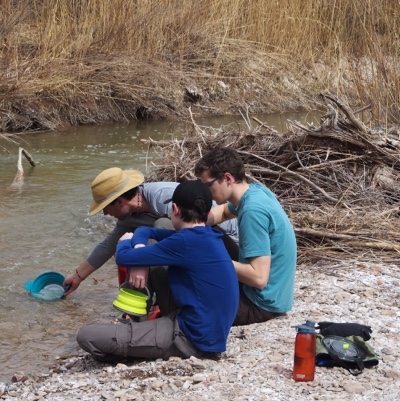Camping Gear List
campinggear list
The moment when you arrive at your campsite and realize that you forgot something important is not quickly erased from memory. Even just one piece of equipment can make or break a trip. That’s why I have put together a list explaining many of the necessities for an enjoyable campout. For this article, I will be focusing on what is commonly referred to as “car camping” where everything you need just has to fit in the back of a car or trailer. A gear list for backpacking will be covered in a separate article that will go over what you need versus what you may just want to bring with you.
Car camping generally involves driving to a campsite, unloading your gear, and having a good time with whoever you are with. Because you drive everything directly to where you will be staying the night, there are few limits on what you can’t bring. This freedom, however, sometimes makes it difficult to remember everything that you really do need for a comfortable night outside.
Shelter #
The first thing that should be on your list is some sort of shelter. This could be in the form of a tent, tarp, or hammock depending on what you have and where you are. I would recommend bringing a tent as they offer the most weather protection and privacy. Many places that people go and camp nowadays are campgrounds with many tent sites near each other so the privacy of a tent is can be very nice.
Sleeping Bag #
Sleeping bags are another important piece of gear. This is your insulation when the temperatures drop at night (If you happen to be in a place that doesn’t get cool at night then a sleeping bag won’t be as necessary). There are different types of sleeping bags depending on what you want to use them for. In the model name of most bags, there will be a number that indicates the lowest temperature that the bag will supposedly keep you warm at. I have noticed though that the number really should be described as the lowest temperature the bag will keep you alive in. For example, in most of the sleeping bags, I have used the actually comfortable temperature is between five and ten degrees warmer than what is listed. Bags also come in different shapes, i.e. rectangular and mummy. Mummy bags taper at the end so they pack up much smaller. The last thing to look at is the insulation that is used. Sleeping bags will use either a synthetic, duck down, or goose down filling. The down fillings are more expensive but are generally much more compressible and lighter. Synthetic bags don’t pack down as well, but they are usually cheaper and will keep their insulation properties even when wet. Because weight isn’t an issue, it is easy to find affordable synthetic sleeping bags. I’ve seen them as cheap as $20 online so there is no reason not to bring one!
Sleeping pad #
Whoever invented the sleeping pad was a genius. Sure, you could just curl up in your sleeping bag on the rocky ground, but why do that when you could lay out your backcountry mattress and sleep like a king (or queen)! Sleeping pads come in many different styles such as foam, inflatable, and self-inflating (kind of a cross-over between the first two). Foam pads are the cheapest and also very light. They are bulky and often less comfortable so keep that in mind. Self-inflating pads are also bulky, but much more comfortable. That comfort does come at an increased cost, however. Inflatable pads vary in bulk, comfort, warmth, and price. These are generally the lightest and most compact options, but also the most expensive.
Pillow #
Technically a pillow isn’t necessary, but having one sure is nice! For car camping, I’ll generally just bring the pillow I use on my bed, but there is also a variety of compact camping and travel pillows. The most common are inflatable pillows and compact pillows.
Food #
I know that I said that a tent should be the first thing on your list, but food should really be the most important thing you worry about. Forgetting food is the most common camping transgression and quite possibly the most harmful one too. With your food, you will need any equipment to cook, serve, and eat whatever meals you have planned. This could be a small stove for boiling water or a full camping cooktop for creating outdoor masterpieces. Dutch ovens and coals are also very popular for campground cookouts.
Backpack or duffel bag #
You’ve got all this stuff, but it’s not very useful if you don’t have a way to transport it. That is where a backpack or duffel bag comes in. Which one you use depends on personal preference, but often a large duffel bag will be cheaper than a large backpack.
Campsite permit (if needed) #
Many public campgrounds require you to purchase a permit to camp. Usually, you will buy these when you get to the site, but occasionally you can order them online beforehand.
Other Items #
Check out my Hiking Gear List article for ideas of what to bring if you go hiking on your campout. Make sure to dress accordingly for your trip, it is not fun to be cold and wet, especially if you know that you could have prevented it! One final item that I like to bring is a camp chair. The ground is nice, but a chair can be much more comfortable and relaxing.
That’s all from me, enjoy your trip!
 Backcountry Basics
Backcountry Basics